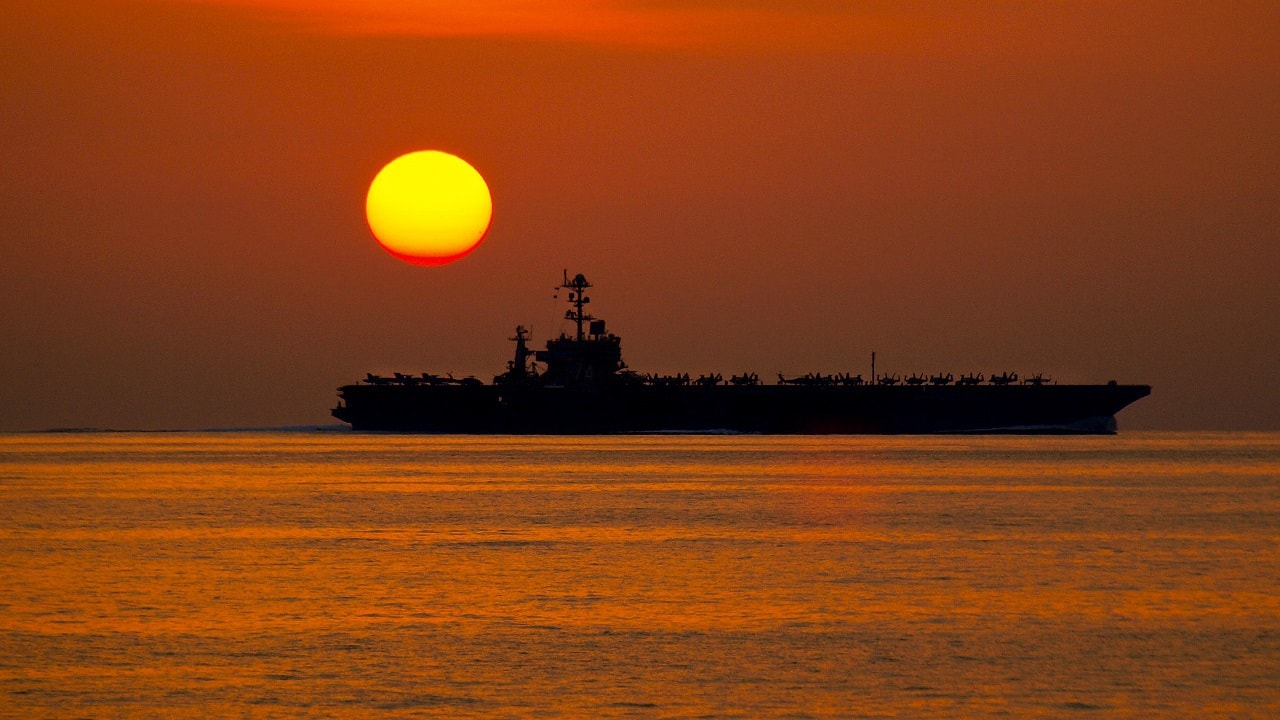So is it going to be Mahan or Corbett in orbit?
Corbett, according to Frank Calvelli, the top acquisition executive for the U.S. Space Force. On January 24, Space News reports, Calvelli addressed the National Security Space Association’s defense and intelligence conference. And his remarks had a seawater flair—in all likelihood unintended—for students of nautical affairs.
Sir Julian Corbett was the fin de siècle English sea-power historian and theorist who insisted that navies cast their gaze shoreward because that’s where military contests are ultimately decided. For him ruling the sea was a necessary but insufficient condition for strategic and political success. After all, noted Corbett, people live on land. Land ought to be the focal point for martial enterprises.
Including those carried out by navies.
Influential voices maintain that the same should go for spaceborne enterprises. In Corbettian style, Calvelli enjoined the U.S. Space Force to devote itself to supporting earthbound operations. At issue is whether the Space Force will turn its attention and energies toward “cislunar” space—defined by U.S. law as “the region of space from the Earth out to and including the region around the surface of the Moon”—in conjunction with NASA, or whether the service will occupy itself mainly with rendering aid to military operations on the Earth’s surface.
The answer matters. Early signs indicate that a cultural rift may be dividing guardians against themselves. Some appear intent on reorienting toward cislunar space, while more traditional officers and officials, Calvelli among them, call on the U.S. Space Force to put the accent on orbital joint operations carried out in concert with the Air Force, Army, Navy, and Marine Corps.
No one should underestimate the chances or consequences of such a rift. The U.S. Air Force, the Space Force’s parent service, has long been a bureaucratic battleground between advocates of strategic bombing, a school of aerial warfare that aims to command the wild blue to strike directly at enemy centers of gravity—the government, economic nodes, maybe even the populace—and advocates of ground-centric operations such as close air support. Roughly speaking, close air support involves cruising hostile skies in search of targets of opportunity among enemy armies on the surface below, or answering calls for fire from friendly land forces.
Both schools inhabit the same geospatial domain. Even so, their missions beget divergent outlooks on air power.
The implications of a similar cultural disjunction could be even more pronounced in the U.S. Space Force than in the Air Force. After all, strategic bombers, fighters, and attack aircraft all roam the same skies, albeit usually at different altitudes and across different geographic areas. They should share a common frame of reference to some degree. But as space enthusiasts note, operating in Earth orbit means not just looking down toward the earth but confining one’s attentions to a relatively small volume of space. Operating in cislunar space means looking away from the Earth. It also means acknowledging new realities of distance and time. A primer out of the Air Force Research Lab points out that “cislunar space is a three-dimensional volume that dwarfs the volume of space” encompassed by geosynchronous Earth orbit.
In fact, cislunar space is 1,728 times as voluminous. It may as well be a domain unto itself.
Despite the orders-of-magnitude shift in perspective between orbital operations and those in cislunar space, we might catch a glimpse of coming debates within the U.S. Space Force by revisiting not just air-power debates but quarrels between sea-power proponents a century-plus ago. That’s when Julian Corbett insisted that Great Britain’s Royal Navy meld strategy, operations, and tactics to support ground forces. He sketched an intensely joint, terrestrial-centric vision of what mariners and fighting ships ought to do.
By contrast Corbett’s contemporary and great rival, Captain Alfred Thayer Mahan, exhorted the U.S. Navy to bend its efforts toward commanding the “great common” that was the high seas. Americans, that is, should amass “overbearing power on the sea” to expel foes from vital expanses and cut off their navies and merchant fleets from the briny main. Mahan seemed relatively indifferent to what happened after apocalyptic strife for maritime command.
The two marine theorists agreed on the fundamentals, namely that navies existed to uphold the national interest in the saltwater realm. But beyond that, their differences in strategic perspective gave rise to profoundly different philosophies on how to design and employ fleets of warships. The U.S. Air Force has seen worldviews conflict in similar fashion, and the Space Force is apt to witness bureaucratic wrangling of its own. It’s worth thinking ahead as partisans of orbital and cislunar endeavors square off on behalf of their preferred strategies, operations, and forces.
We have seen this before.
So in the interest of self-knowledge, spacefarers could do worse than review the works of sea-power theorists of old. Break out those dusty copies of Corbett’s Some Principles of Maritime Strategy and Mahan’s The Influence of Sea Power upon History, 1660-1783. The ages of sail and steam have something to teach those venturing into the final frontier.
Author Expertise and Experience: Dr. James Holmes is J. C. Wylie Chair of Maritime Strategy at the U.S. Naval War College and a Nonresident Fellow at the University of Georgia School of Public and International Affairs. The views voiced here are his alone.

